Turn your customer relationship management (CRM) software into a hub for sales, marketing, and collaboration through CRM integrations with other business applications. In this article, we explore how CRM system integration works and dive into ways integrations can streamline your company’s customer management activities and workflows. We also discuss common CRM integration examples, including email, phone, and marketing automation.
What Is CRM Integration?
A CRM integration connects your CRM system to another app, allowing data to flow between them in one or both directions. It improves productivity through workflow automations and by giving you and your team access to all the data (and often much of the functionality) of both systems in a single platform. In addition, an integration can eliminate the need to toggle back and forth between the two integrated systems.
How to Integrate CRM Apps
There are several ways to integrate your CRM with other software and tools in your technology stack. Depending on your preferences, existing tools, and budget, you can choose one or more integration methods. Below are the ways that you can integrate your CRM with other systems:
Most CRMs come with prebuilt integrations with tools that sales teams commonly use, such as email, accounting, and collaboration software. You can quickly integrate these external apps with your CRM with just a click of a button. For example, Pipedrive’s direct integration with Mailchimp automatically syncs your contacts between the two apps.
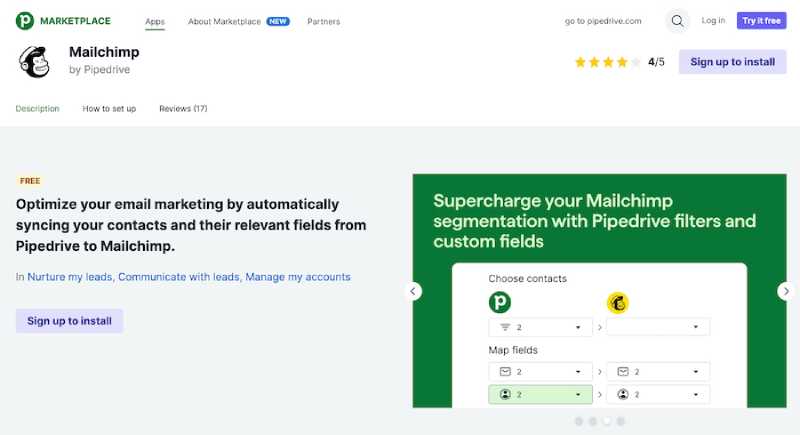
Pipedrive’s direct integration with Mailchimp (Source: Pipedrive Marketplace)
This option involves subscribing to a single product with a suite of integrated apps. The apps from that provider automatically and seamlessly integrate, but the available integration options may be limited. One example of this provider is HubSpot CRM, which offers a Sales Hub, Marketing Hub, and Service Hub. All three apps integrate by default.
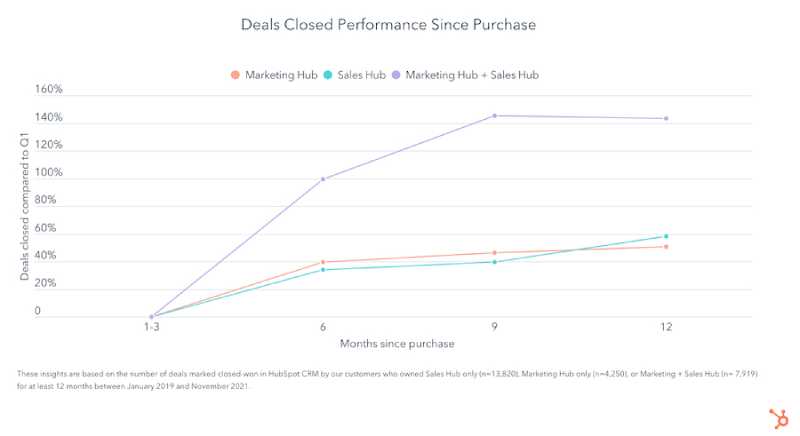
HubSpot CRM integrated deal insights from Marketing and Sales Hubs (Source: HubSpot)
An application programming interface (API) is a software intermediary that allows one software to talk, connect, and share data with another application. Using APIs, your IT staff or developer can create more customized integrations between your CRM system and other apps. This connection is especially useful if you have specific functionality needs that are not covered by your CRM’s standard integration options.
Below is an example of how you can schedule data export using API in Freshsales:
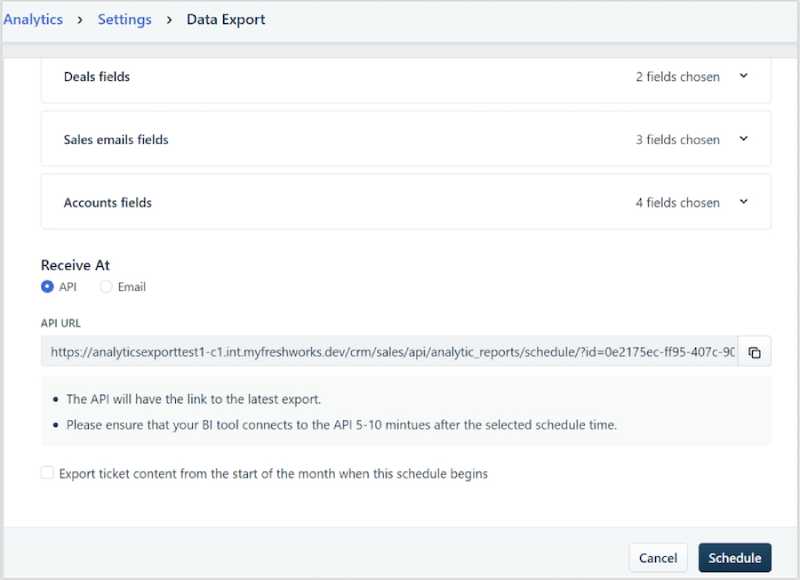
Freshsales scheduling data export via API (Source: Freshsales)
A connector software like Zapier provides users with a library of over 1,000 no-code integrations to connect your CRM with other apps. You can create custom integrations to automate specific tasks or workflows. For example, you can connect Insightly CRM with Facebook Lead Ads via Zapier to automatically send new social media leads to your CRM.
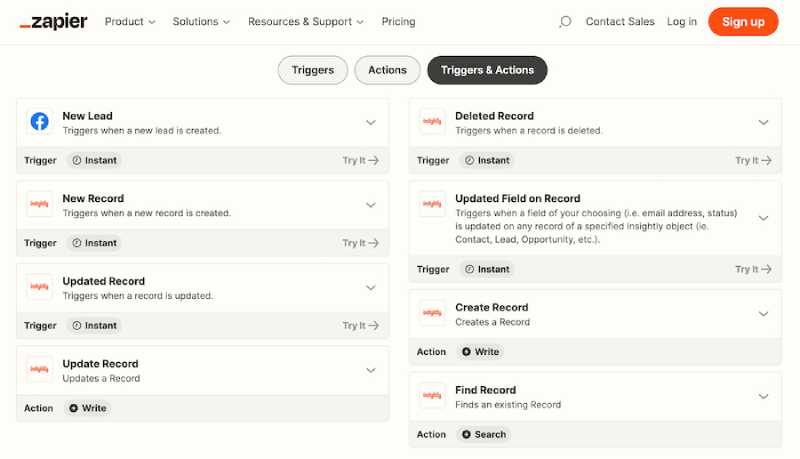
Zapier supported triggers and actions for Insightly CRM and Facebook Lead Ads integration (Source: Zapier)
If you have highly specialized business needs, it is best to have your software developer write custom code to facilitate your CRM software integration. Take note, however, that this option might not suit small businesses because it requires significant resources for development.
7 Key CRM Integration Examples
Essential integrations help streamline and automate processes, save time, and reduce costs. They also help facilitate internal collaboration and data sharing, contribute to lead generation and nurturing efforts, and help businesses close deals faster. Since CRM systems are often first adopted for sales purposes, below we explore seven of the most useful CRM integration examples for sales teams:
Email integration lets you access your business contacts and emails without leaving your CRM software. It also allows you to use shared templates and behavior-based or timed email drip campaigns (also known as “sequences”) from your CRM, improving lead nurturing efforts.
Plus, many email marketing platforms enable you to build lead generation web forms and connect them to your social media channels or embed them into your website. As new leads subscribe to email updates, the integration automatically adds the new contacts to your CRM database for future manual and automated sales and marketing activities.
Below are some of the best email and CRM integration examples:
- Streak CRM for Gmail: Streak CRM is one of our top picks for the best Google CRMs because it seamlessly integrates with Google Workspace apps. Its browser extension helps you manage mass emails, track email engagement, and automatically categorize emails directly within your Gmail Inbox.
- HubSpot CRM email integration: HubSpot CRM tops our list of the best CRMs for Outlook. Its integration with Outlook and Microsoft Office 365 lets you log emails, monitor customers’ email interactions in real time, and access email templates.
- Daylite’s Apple Mail integration: Daylite made it to our list of the best CRMs for Mac users because it is specifically designed for Apple (iOS) devices like MacBooks, iPhones, and iPads. Its native Apple Mail integration allows users to synchronize contacts, emails, tasks, and calendars.
CRM integrations that connect your phone’s voice calling and short message service (SMS) texting give you two additional channels for engaging customers and leads. Phone integration allows you to make outbound calls, record phone conversations, and log phone calls within your CRM. SMS integration enables you to create and send text marketing campaigns and follow-ups with contacts via text messages.
Below are examples of the best CRM integration capabilities for voice calling and SMS texting:
- Salesflare and RingCentral integration: You can integrate RingCentral with Salesflare via Zapier to synchronize your contacts between the two apps, make calls directly from your CRM system, and log calls and notes.
- HubSpot phone and Nextiva integration: When you integrate Nextiva with HubSpot CRM, you can view a prospect’s or customer’s information and interaction history with your company before you make a call.
- Bitrix24 CRM messaging integration: Bitrix24’s SMS integration allows you to send text messages to clients, route conversations, and use canned replies from within your CRM solution.
CRM integration with marketing automation software allows you to easily monitor the status of leads and manage activities in your sales pipeline. You can even set up triggered marketing actions based on customer activity recorded in your CRM. For example, when a contact subscribes to one of your emails, the CRM tells your email marketing tool to start sending a series of drip marketing emails to the new prospect.
One example here is the Salesforce and Mailchimp integration. This two-way integration lets you sync contacts between the two apps. You can automatically save Mailchimp subscribers as Salesforce leads, send targeted emails to various lead lists, and view marketing campaigns and reports in Salesforce.
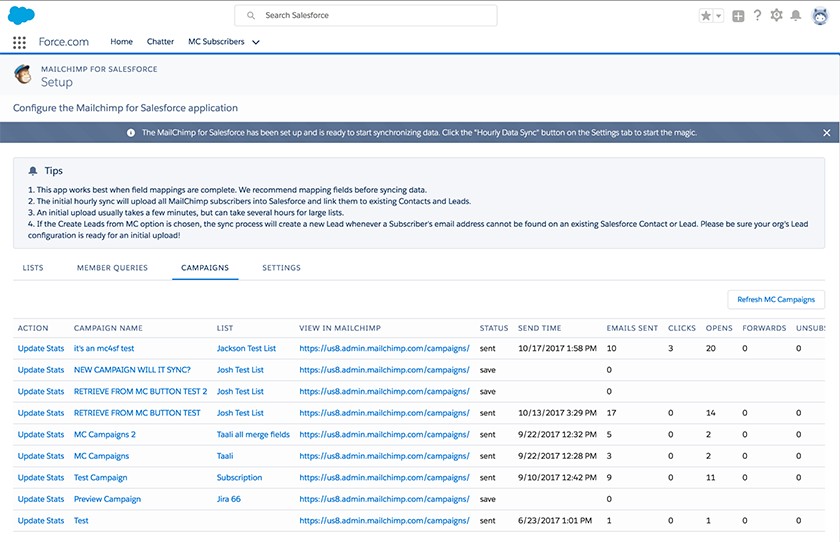
Salesforce and Mailchimp integration with overview of campaigns (Source: Mailchimp)
Not all CRM providers have native team communication tools for sending emails automatically, assigning tasks and goals, collaborating, or notifying teammates of updates. If you don’t have these CRM features, you can integrate your CRM software with your favorite collaboration apps. This increases productivity and efficiency by reducing the need to manually send messages and updates across the team.
Here are examples of CRM integrations with various team collaboration software:
- Salesforce and Slack integration: Salesforce is featured in our top choices for the best CRMs that integrate with Slack. Its integration with Slack allows you to access CRM contact records, share them via the Slack team collaboration tool, and receive Slack notifications when your CRM records are updated.
- Pipedrive and Trello integration: This integration also allows you to sync deal records directly from your CRM. You can also automate the creation of Trello cards as deals move through your sales pipeline in Pipedrive.
Integrating CRMs with ecommerce platforms creates a smoother sales process by automatically syncing contacts, products, and orders between the two platforms. If you are looking for the right CRM for your online store, check out our top picks for the best ecommerce CRM software.
See some of the most robust ecommerce-CRM integrations below:
- HubSpot ecommerce plugins: HubSpot CRM is one of the best CRMs for Shopify sellers because of its plugin that synchronizes data with Shopify. This integration lets you manage contacts, products, and orders from within your CRM, as well as automate ecommerce marketing campaigns for customers and abandoned carts.
- Salesforce and Magento integration: The integration between the Salesforce CRM and Magento ecommerce app allows you to automatically sync data, such as customer records, product categories, and orders. This real-time synchronization streamlines inventory tracking as well as customer record and order management since the CRM is automatically updated when changes are made in Magento.
Integrating CRM software with small business accounting software enables bookkeepers and accountants to keep track of bills and invoices for each customer or company. Users can manage payments and accurately record revenue sources from within the CRM platform, which saves time and eliminates human error in manually uploading financial data.
Below are some of the most beneficial CRM and accounting integration examples:
- Method:CRM and QuickBooks integration: Method:CRM is on our list of the best QuickBooks CRM options because of its comprehensive billing tools, which include self-service customer portals and payment gateways. The integration with QuickBooks allows customers to view estimates and pay invoices via customer portals synced to both apps.
- HubSpot CRM and Xero integration: HubSpot CRM is featured in our list of the best Xero CRM integrations. This connection provides end-to-end visibility into your customers’ invoicing and payment activities. You can also view the month-to-month sales performance vis-a-vis the money coming into your business.
Benefits of CRM Integration
An integration for CRM provides a plethora of advantages for streamlining businesses and sales processes. We’ve listed some of the top pros to help you decide whether you should integrate your CRM with one or more of the other software tools your business uses.
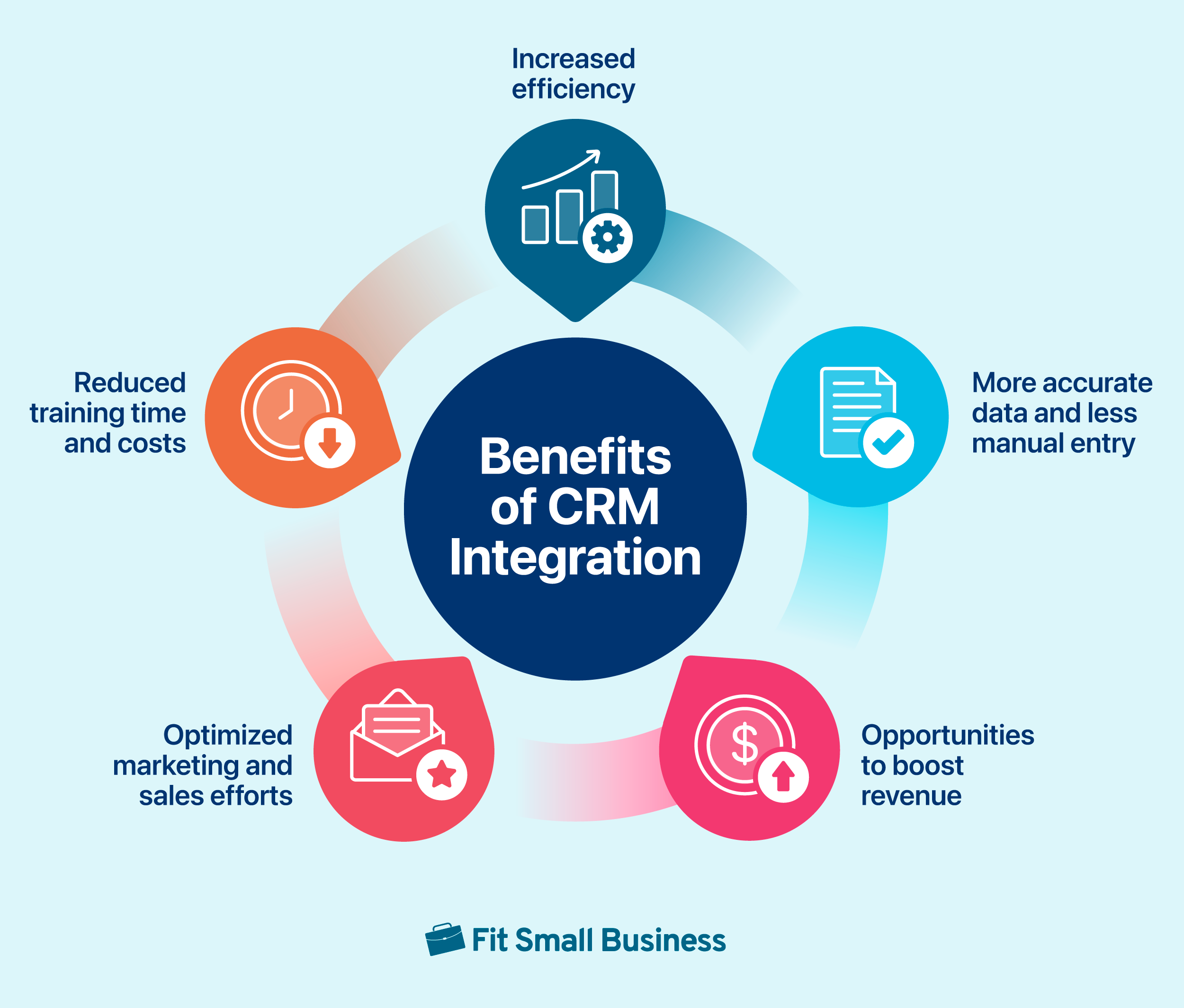
- More accurate data and less manual entry: Integrated systems increase data accuracy and reduce the risk of mistakes by syncing and centralizing records. This reduces or even eliminates the need for manual or multiple data entry points. Plus, fixed errors will update across all platforms in real time.
- Increased efficiency: Connecting systems across departments eliminates the need to access several programs to manage all project areas. For example, integrating accounting tools with your sales CRM enables you to automatically generate and send invoices to customers when projects are marked complete.
- Reduced training time and costs: Training employees to use your CRM and other software can be expensive and time-consuming. When employees use interconnected systems and are able to use the tool they are most familiar with, it streamlines training. Shared knowledge also makes sales training faster and more efficient, and letting your team members use their preferred interface increases CRM adoption.
- Optimized marketing and sales efforts: Integrations provide detailed insight into customers’ spending habits and online activities so your sales reps can go into conversations knowing more about them. You can also deploy highly targeted automated marketing campaigns based on customer profiles, behavioral triggers, and CRM features like tags and lead scoring.
- Opportunities to boost revenue: A centralized database indicates what else customers may want or need based on what they have already purchased. This creates opportunities to increase revenue through upselling. It also paves the way for cross-selling by sales reps and through marketing automation.
Challenges of CRM Integration
There are potential drawbacks that keep some companies from using CRM integrations. Here are some of the drawbacks that you’ll encounter and need to consider when integrating your CRM with other software in your technology stack.
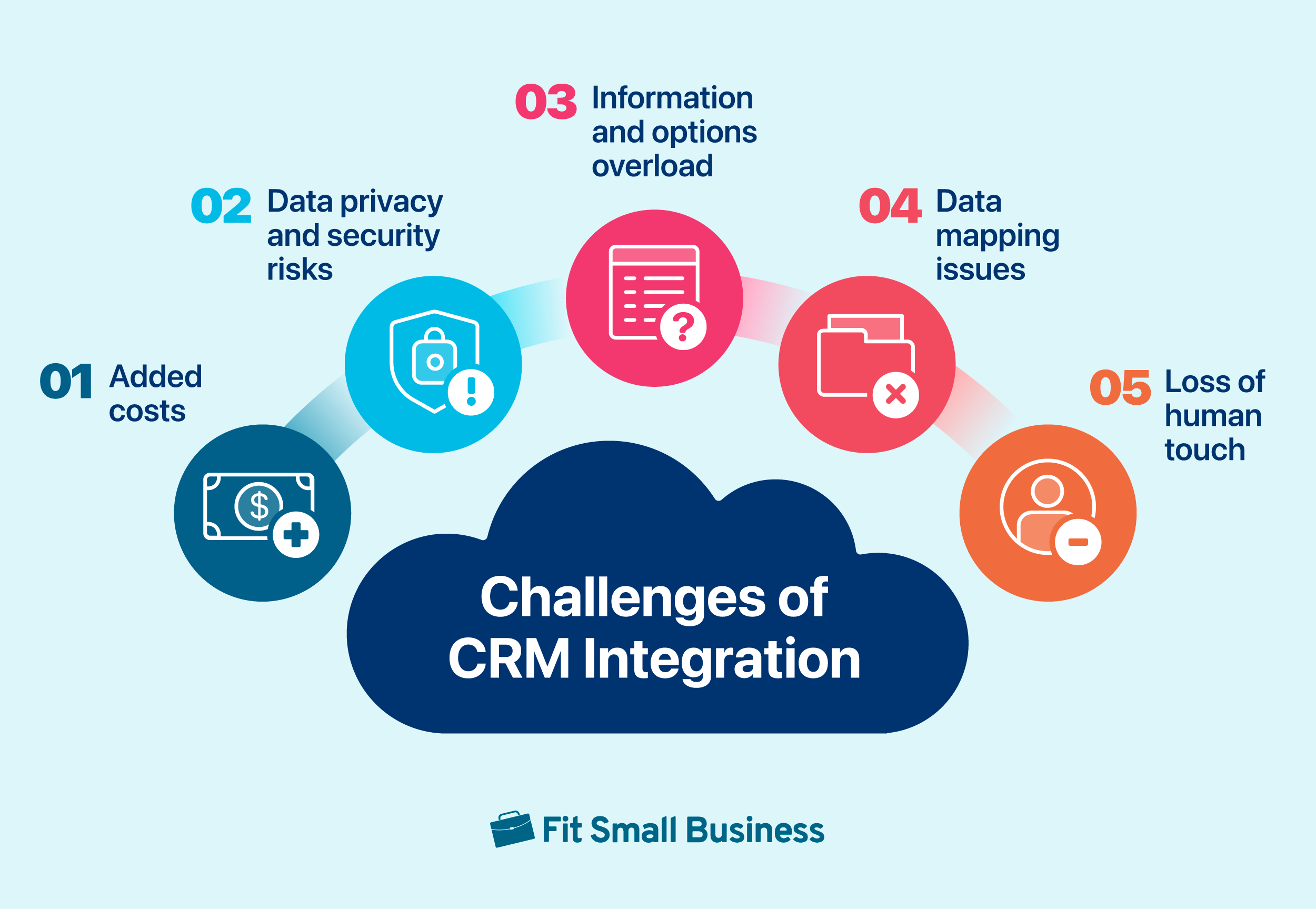
- Added costs: Integration needs tend to pop up over time as your business grows and shifts, leaving you with surprise costs. The more well-defined your sales process, the better you can accurately budget for needed CRM integrations.
- Data mapping issues: There’s often a mismatch between data field names and types, as they vary from app to app. For example, Salesforce permits a single address field, while other business apps may have two fields for this entry, causing an inaccurate syncing of data. It is best to use test migrations so that you can identify and resolve these issues before you migrate all your CRM data.
- Information and options overload: With so many apps to choose from, it can be overwhelming to pick the best providers for your business. While integrations expand CRM functionality, they don’t always simplify things. It is important to research your options and narrow down your list based on the features that you truly need.
- Loss of human touch: CRMs can automate many different types of business processes, including communication. While this streamlines transactions and processes, some clients still prefer human interaction, and some customer support and service issues are best handled person-to-person. Use your CRM’s predictive and behavioral analytics capabilities to determine how to personalize customer interactions and retain that much-needed human touch.
- Data privacy and security risks: Whenever you use a third-party provider for integrations, there is the risk of sensitive data being used for fraud or vulnerable to data breaches. It’s vital to prioritize data security when choosing software, including measures to prevent unauthorized access and ensure both at-rest and in-transit data encryption.
Frequently Asked Questions (FAQs)
A CRM API integration is a type of connection that facilitates data exchange and functionalities between your CRM system and other software. This allows you to centralize your work processes in a single platform by integrating third-party apps with your CRM.
One of the simplest ways to integrate a CRM system with a website is via a plugin or extension. These tools connect seamlessly with your CRM, allowing you to manage your sales pipeline, generate leads, and track customer behavior on your company website from one platform.
CRM integration is important to businesses because it helps align sales and marketing teams by providing a single source of truth for reps from both departments. It also improves efficiency because reps no longer have to toggle back and forth between apps while looking for relevant customer information. Moreover, it helps reps provide a consistent and real-time view of customer interactions, resulting in better customer experience.
Bottom Line
CRM integration services play a huge part in connecting various software tools your company uses to streamline your business processes. It can help your business save money by providing only the functionality you need rather than upgrading to more expensive CRM providers or plans. When choosing various software, look for providers that integrate with your CRM and the other tools that keep your business running smoothly, effectively, and securely.

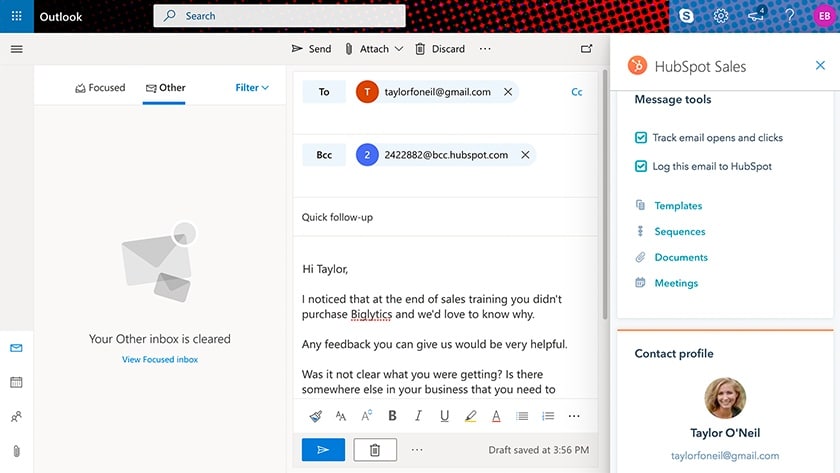
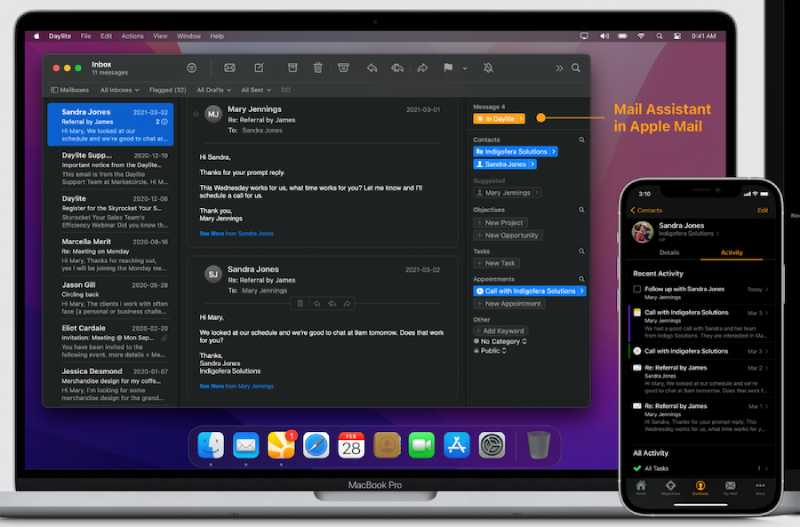
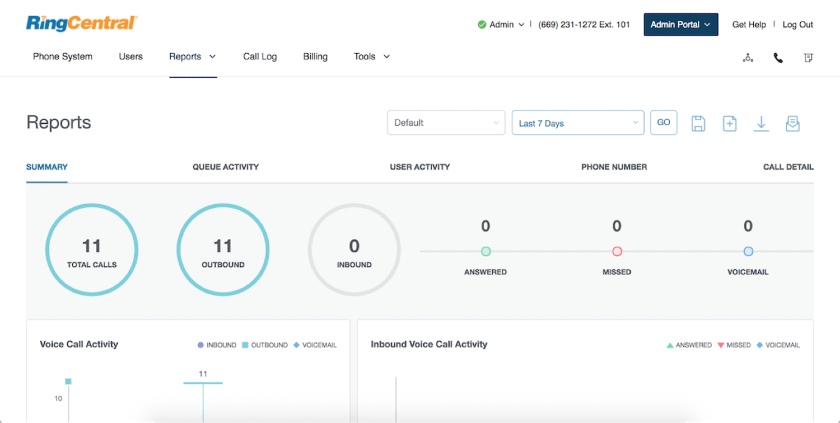
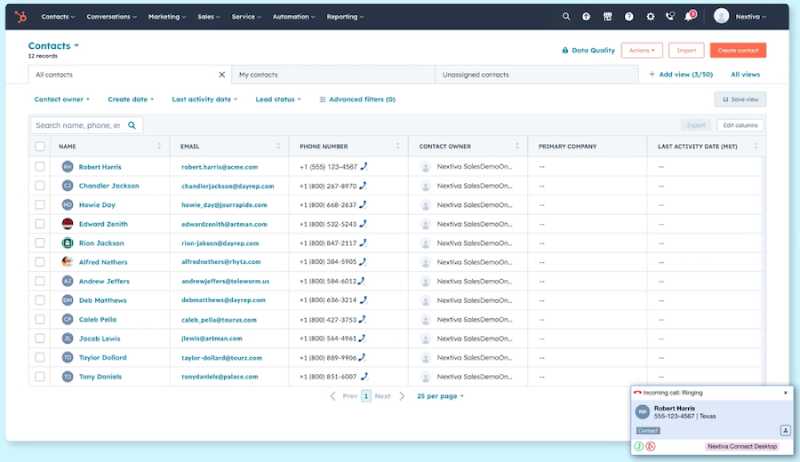
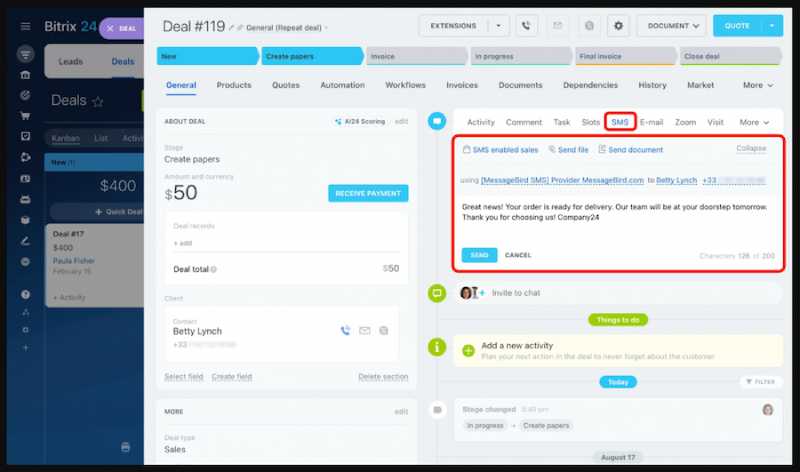
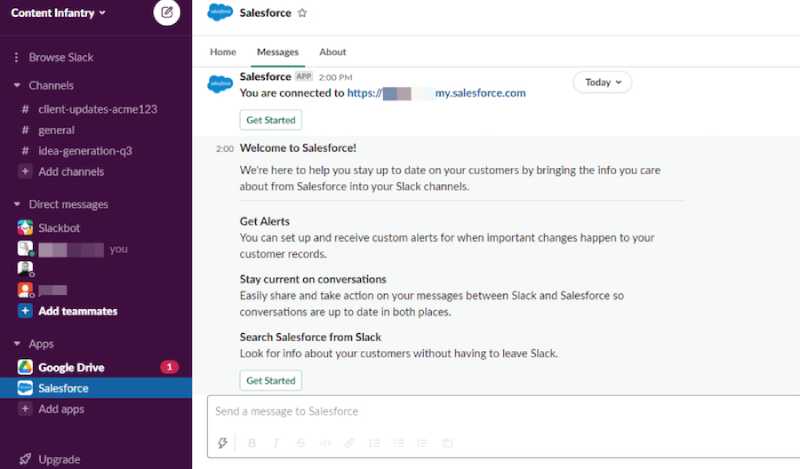
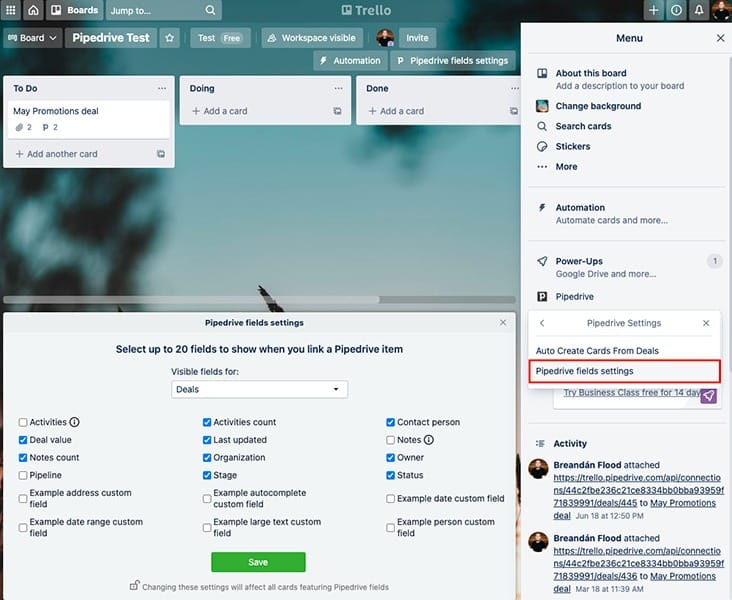
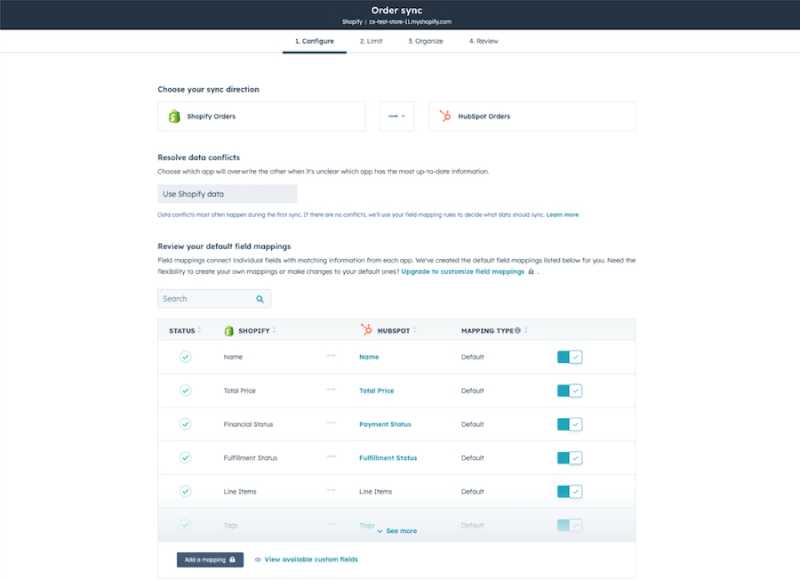
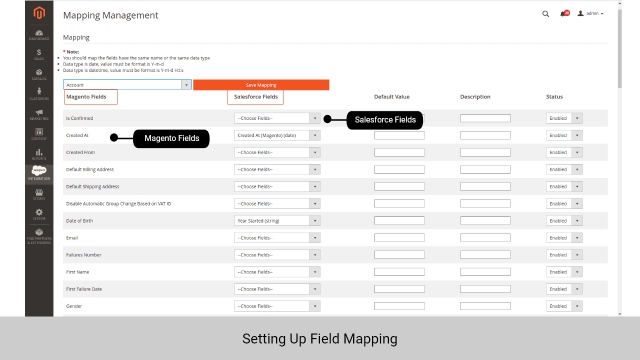
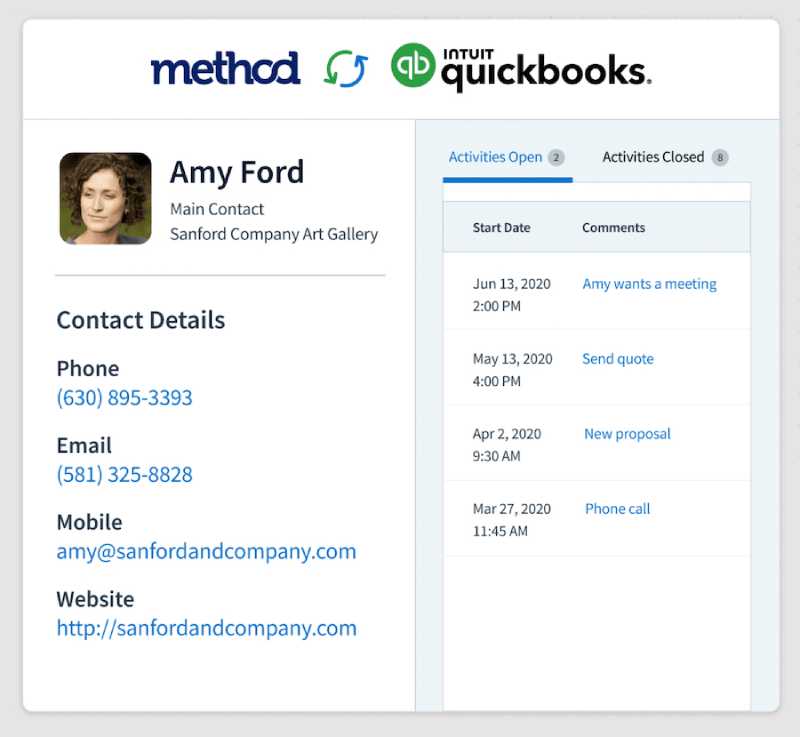

Integrating your CRM with your social media platforms enables you to manage posts and comments and track social engagement directly through your CRM platform. It also automates notifications, which allows you to respond faster to your customers and leads when they reach out to you via social networks.
Here are good examples of CRM social media integration:
Agile CRM’s Facebook integration allows you to pull social data into your CRM contact records. (Source: Agile CRM)
HubSpot CRM with LinkedIn Sales Navigator widget (Source: HubSpot)